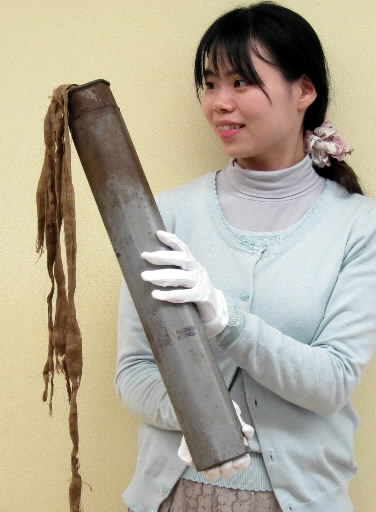Incendiary bomb
May 30, 2013
Wooden buildings burned in air raids
Because Hiroshima was considered a possible target for the atomic bomb, the city was spared the heavy air raids suffered by other places during the war. Not only large cities like Tokyo and Osaka, but also Hiroshima-area cities like Fukuyama, Kure, and Tokuyama bore the brunt of indiscriminate attacks, which produced great numbers of civilian deaths.
In air raids, the M-69 Incendiary Cluster Bomb was often used. This bomb was designed to burn down Japan’s wooden buildings.
The hexagonal-shaped bomb was about 50 centimeters long, about 7 centimeters in diameter, and weighed 2.8 kilograms. Lurking inside was a type of petroleum jelly called napalm. At one end of the bomb was an explosive charge, and when the bomb struck the roof of a building, or the ground, the napalm ignited and fire quickly spread.
The velocity of the bomb’s drop was carefully controlled, with the detonator on the bottom and four strips of cloth, each about 1 meter long, fluttering at the other end.
Bundles of 38 of these bombs were dropped onto Japanese cities from American B-29 bombers.








